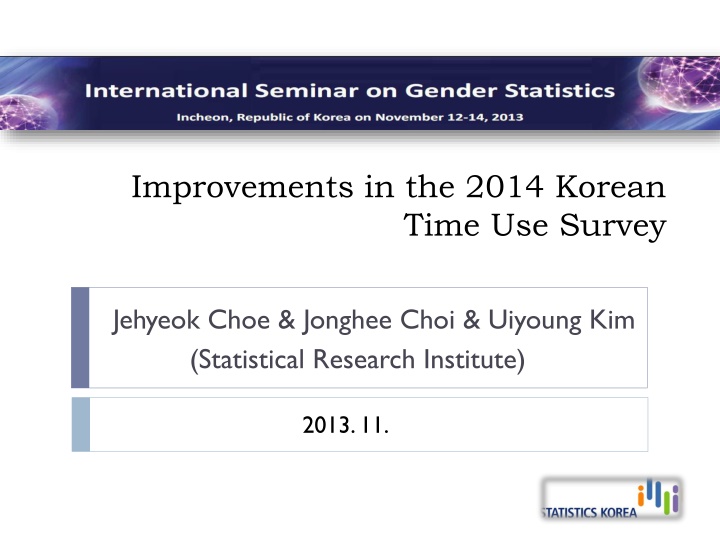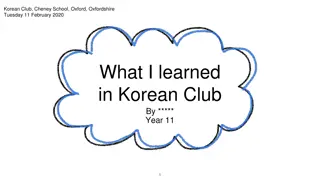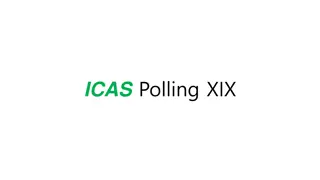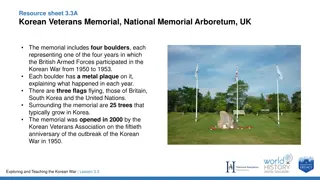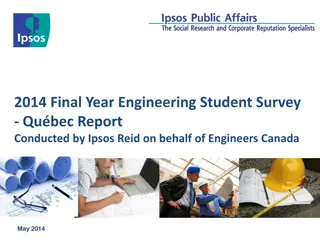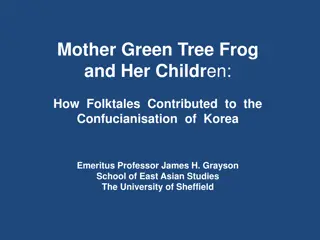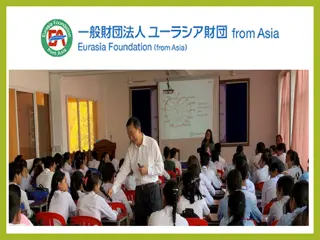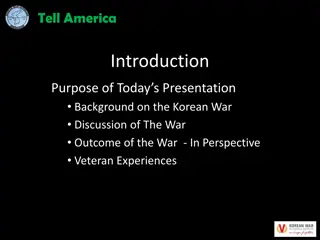Improvements in 2014 Korean Time Use Survey
Description of KTUS objectives including measuring time spent on activities, understanding unpaid housework, and providing data for policy-making. History of KTUS from 1999 to 2014 and sample design details. Target population, data collection methods, and sample design for the previous KTUS are outlined
Download Presentation

Please find below an Image/Link to download the presentation.
The content on the website is provided AS IS for your information and personal use only. It may not be sold, licensed, or shared on other websites without obtaining consent from the author.If you encounter any issues during the download, it is possible that the publisher has removed the file from their server.
You are allowed to download the files provided on this website for personal or commercial use, subject to the condition that they are used lawfully. All files are the property of their respective owners.
The content on the website is provided AS IS for your information and personal use only. It may not be sold, licensed, or shared on other websites without obtaining consent from the author.
E N D
Presentation Transcript
Improvements in the 2014 Korean Time Use Survey Jehyeok Choe & Jonghee Choi & Uiyoung Kim (Statistical Research Institute) 2013. 11.
Contents 1. Description of KTUS 2. Sample Design for the Previous KTUS 3. Improvements in Sample Design for the coming 2014 KTUS 4. Improvements in Classification of Activities for the 2014 KTUS 5. Conclusion
Description of KTUS Objectives To provide basic data required for understanding people's life style and their quality of life by measuring how people spend a 24 hour period To understand time spent on unpaid housework to analyze the economic value of housework and to provide basic data required for integrating the satellite account of households into the national account system To provide basic data for establishing various policies related to work and family equilibrium, labor, welfare, as well as for academic research.
Description of KTUS-2 History 1999 2004 2009 2014 17,000hhlds (43,000persons, 86,000 diaries) 12,750hhlds (32,000persons, 64,000diaries) 8,100hhlds (21,000persons, 42,000diaries) 12,720hhlds (31,800persons, 63,600diraries) Sample Size Economically active population Survey Economically active population Survey Sample Frame 2008 social survey - The number of surveys per year Two surveys (Mar.& Sept.) Two or three surveys per year One survey(Sept.) One survey(Sept.)
Description of KTUS-3 Target Population All residents living in households in Korea aged 10 years and over Periodicity : every 5 years Sample Size (base on 2009) 21,000 persons All household members aged 10 years and over of 8,100 households from 540 Enumeration Districts (15 households per ED) Data Collection Methods Questionnaires : Face to face interviews 2 days of diaries: self-recorded Record their own activity for two consecutive days in 10 minutes intervals
Sample Design for the Previous KTUS Sampling Design Stratified two stages cluster sampling design Stratification of ED: 25 strata based on 16 metropolitan cities/provinces and Eup(town), Myun(township)/Dong Stage1: Selection of independent samples of EDs from each stratum through a pps sampling design Stage2: Select households from a selected ED using simple random sampling and measure all the eligible household members in the selected household *ED: Enumeration Districts(consist of 40~60 hhls) Limits of the Previous 3KTUS Difficult to evaluate the seasonal effect due to the lack of representativeness March and September in 2009 share the same environmental characteristics Need to sample representative data collection periods
Improvements in Sample Design for the 2014 KTUS Relationship between temperature and activities(as of 2009 KTUS) Time spent on sleeping, working and watching TV reduce as temperature goes up, excluding housework
Improvements in Sample Design for the 2014 KTUS Relationship between rainfall and activities(as of 2009 KTUS) Time spent on sleeping, housework and watching TV increase as rainfall goes up, excluding working
The Pattern of Spending Time on Activities Varies as the Weather Changes
Improvements in Sample Design for the 2014 KTUS The optimal number of strata summer, winter, and hot fall As result of cluster analysis, 2~3 strata shows optimum
Improvements in Sample Design for the 2014 KTUS Stratification of days to fully represent the whole year Stratification of days using cluster analysis Clustering variables: Weather during five years from 2008 to 2012( temperature, rainfall, wind speed, humidity, sunshine duration, cloudiness etc.) Similar results from Principal Component Analysis considering the correlation among variables 2 strata of days: summer and the rest April, August in 2014 3 strata of days: summer, winter, and hot fall July, September and November in 2014
Improvements in Sample Design for the 2014 KTUS Ongoing research Selection of survey periods(10~14days) Optimal sample size of ED and households Construction of weights for data analysis Decide 2014 KTUS sample frame using 2013 the Social survey sample frame or KTUS own sample frame from the population and household census Patterns of diary days-dates by group in the 2009 KTUS
Improvements in Classification of Activities for the 2014 KTUS Classification of activities is crucial in the analysis of time use data Consideration of improvement Reflect on social trends Maintain backward comparability Improve international comparability with time use data among different countries; HETUS classification, MTUS classification, Revised UNSD s ICATUS
Improvements in Classification of Activities for the 2014 KTUS Procedures for preparing the 2014 KTUS classification of activities Literature reviews & benchmarking international classification Gathering opinion from KTUS users Writing up the 2014 KTUS classification draft Revising the draft Meetings with current/previous staff of KTUS (checking difficulties in practice) Meetings with outside experts/KTUS users (checking the balance between backward comparability and the need for improvements) Conducting a pilot survey (Sep. 13) The Korean Official Statistics Committee meeting ( 14): finalizing the 2014 KTUS classification of activities
Improvements in Classification of Activities for the 2014 KTUS Benchmarking HETUS, ICATUS, and MTUS for international comparability Efforts for detailed measure for Unpaid Work Childcare : adding a 2-digit category for care of elementary school l children in lower grades Volunteering : widening the scope of volunteering activities Added items reflecting changes in social trends Pet care (added in the 2-digit category) Purchasing services for domestic works (added in the 3-digit category) Using smart devices (added in the time use diary) In accordance with international concept: With whom (who did the main activity with who were with)
Improvements in Classification of Activities for the 2014 KTUS
Improvements in Classification of Activities for the 2014 KTUS
Conclusion To achieve valid time use results Select a sample of days that represents the whole year survey periods Decide optimal sample size of ED and households Decide survey periods of 10 days or 14 days to cover each day
Appendix-Results of 2009 4.8 1.4 3.4 4.2 1.5
Thank you Q/A
